Albert De Plazaola
As a workplace strategist, I am constantly asked, “What is the workplace of the future?”
It’s a question I dread, because a subtext typically lingers underneath, e.g., “I hate the open office,” “All this talk about collaboration is an excuse to take away my office,” and even, “I hope you feel good about taking away my private office” (for the record, I don’t). In the COVID-19 era, the question remains but the expectations and predictions are shifting. Fortunately, Frank Lloyd Wright already designed the solution.
When asked about a post-COVID-19 workplace, I simply whip out my smartphone and show the offices Wright created for S.C. Johnson’s headquarters, completed in 1939.

It. Is. Perfect. Six feet of distancing? Check. Need wide circulation paths to prevent those now-precarious spontaneous collisions between employees? Check. Natural light? Check. Want some biophilia? Problem solved.
Unfortunately, I can only maintain the irony and half-earnest smile for so long while showing this image. The reality is that Wright’s building would never be built today: it’s arduously inefficient (from a headcount versus space ratio) and would be unlikely to survive a modern-day budget review (referred to in the industry as “value engineering”). A budget-conscious value engineering analysis would quickly replace Wright’s custom-built furniture with “equally functional” corporate furniture systems or a benching solution to maximize efficiency — oh, and, yes, collaboration.
The reality is that the COVID-19 crisis is not asking us to predict the “workplace of the future” but rather to evaluate cost against the unknown.
The term “New Normal” is about managing a real estate portfolio and its enormous costs against new workforce patterns that may undermine the very existence of an office. When colleagues or clients (or family members) ask me “What is the workplace of the future?”, the subtext is now, “Do we even need a workplace in the future?”
The new approach to the old question
For those who have ever experienced a workplace redesign, you know the process starts with visioning and programming phases. Workplace specialists spend time with C-suite members to understand the future strategy and goals. We interview and survey employees to determine which teams need to sit next to each other. We examine how often teams and individuals engage in work behaviors such as focus work, collaboration, learning and socializing (we call these “work modes”). Based on this research, we plan and allocate the commensurate spaces to support these work modes. Concepts are designed to provide employees spaces to optimize their experience and productivity. If you need to focus, try a focus booth. If you want to encourage more collaboration, try microcafes and teaming zones (if you’ve seen Silicon Valley, you get it).
Then COVID-19 hit. And everyone now focuses, collaborates, socializes and learns on a computer screen. At home. And guess what? It’s working, kind of.
Early research suggests that engineers have seen an increase in productivity (quantity and quality of code). Leaders who doubted the efficacy or expected it difficult to manage distributed teams have found their stride — albeit through a sink-or-swim scenario. Professional commuters in New York and San Francisco have found relief. A collective “I told you so” now ripples through conservative corporate HR policies. Proponents of a “work anywhere and anytime” philosophy are having a moment. It took a pandemic for progressive workforce evangelists to get their 15 minutes.
Meanwhile, the workplace is left dormant and lonely, experiencing an existential moment, asking itself, “Should I exist?” Not surprisingly, CFOs are asking the same question.
CFOs are pressing their constituents (and all workplace professionals) to determine why we need a workplace at all. Why continue with exaggerated lease costs and liabilities that hit the bottom line with little quantifiable return on investment?
Here’s why.
Our research at Unispace indicates that nearly 50-60% of the workforce will continue to go to the office every day (once regional restrictions allow), either by preference or out of necessity. In parallel, we anticipate remote working figures will continue to climb — our latest predictive models suggest remote working will increase by 20-30%.
Furthermore, our research indicates there are limits to how productive employees can be in remote settings, especially when they need to connect with others. When we need the emotional, psychological and professional benefits of tightly woven teams and the support of a strong corporate culture, remote working falls short. Way short. Even among introverts, seclusion from their cohort comes at a cost. Remote working allows for convenience — but it comes at the expense of evolving culture, connection and innovation.
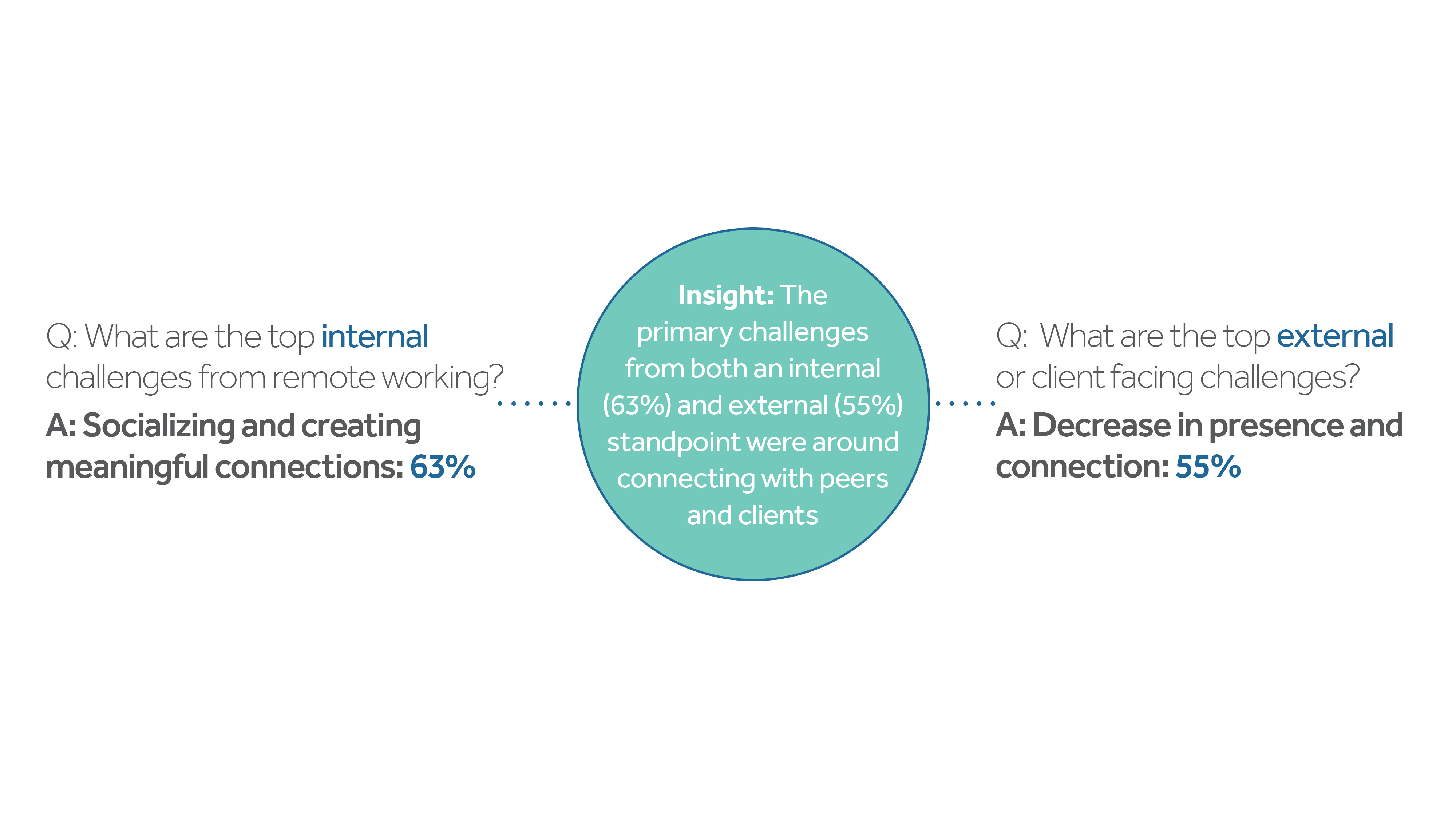
If you believe Peter Drucker’s “culture eats strategy for breakfast,” then clearly a new purpose for workplace emerges. Despite existential objections, the workplace finds reason to exist in a post-COVID reality.
Workplace is a combination of community, problem-solving and innovation
Shifting workforce patterns demand that the workplace is responsive and outcome based. With so many employees effectively completing individual tasks and focus work at home or remotely, it seems anachronistic, misguided and foolhardy to invest in workspaces for employees to write emails or format spreadsheets. On the contrary, the workplace needs to enable outcomes, and not “work modes.”
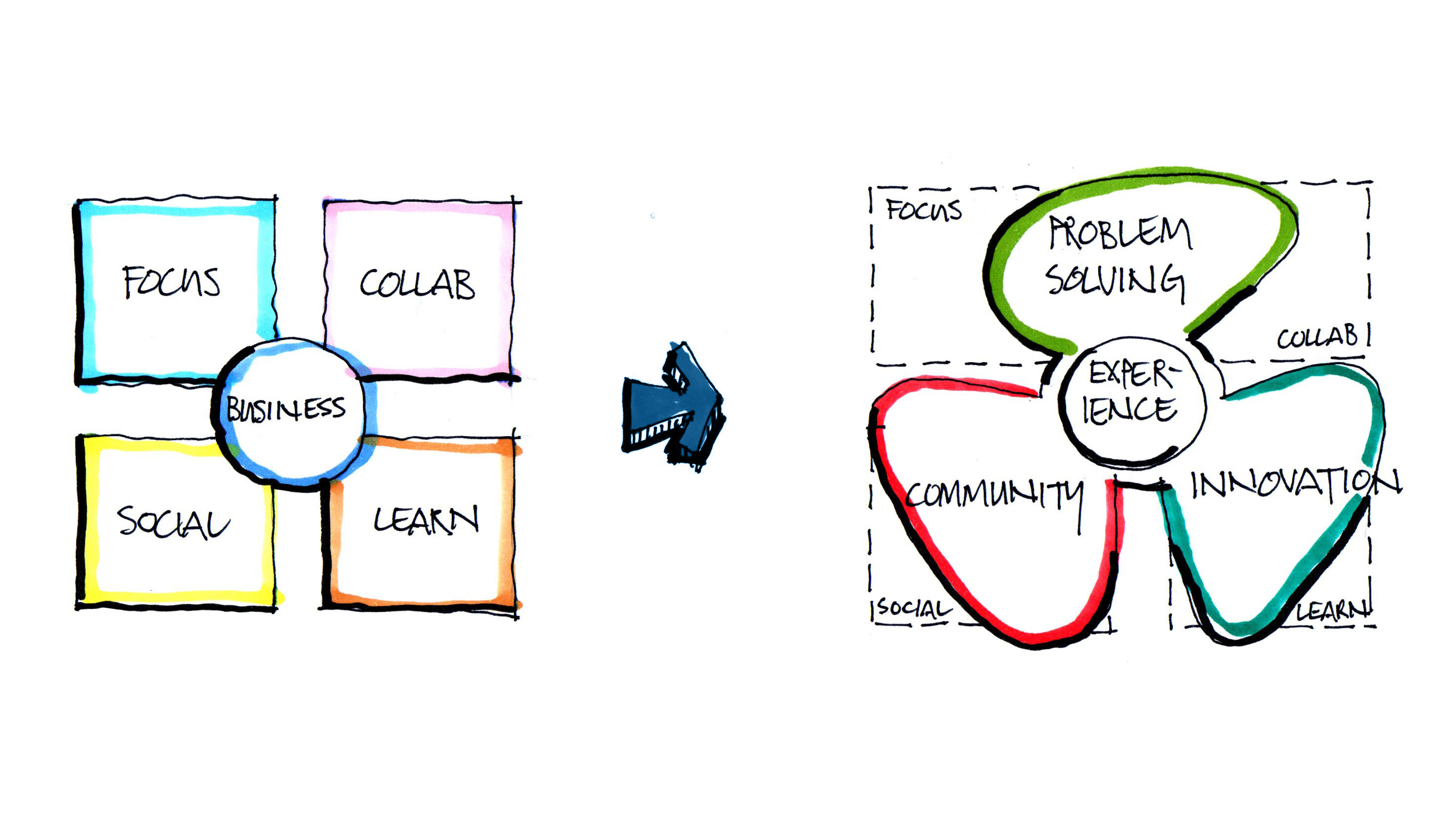
As the “propeller” graphic suggests, we need to design and develop workplaces that create value where remote working cannot, specifically around problem-solving, innovation, and community building. These are drivers and outcomes that remain elusive for conventional organizations that increasingly rely on remote or distributed workers during the COVID crisis.
The “propeller” concept is not novel for most workplace practitioners: We’ve been preaching the benefits of a more interactive workplace for years. But COVID has tested its efficacy, and we now have a window of opportunity to elevate productivity, balance and value.
Community
In a post COVID-19 reality, organizations must articulate their reason for being.
We interpret community as a group of people with a shared sense of belonging and a way of life with a common purpose. Thus, great communities thrive because they have a distinct reason for being and understand the importance of working together.
After the pandemic has passed, this will be more important than ever. Millennials, who increasingly occupy management positions, historically sought to overlap their career pursuits with personal convictions. Generations Y and Z also look for this convergence, but increasingly seek organizations that reflect brand not simply through logos or campaigns, but through behaviors. Think, “behaviors as brand.” A community-focused workspace can demonstrate a commitment to mentorship and camaraderie and a collective sense that like-minded people are there to do great things.
When thinking about great spaces that can foster community, the following space types should be considered:
- Bleachers
- Townhall
- Seminar/theater
- Library
- Team zone
- Group cabanas
- Food court
- BBQ pits
- Garden and greenhouse
- Karaoke lounge/music room
- Brand zone
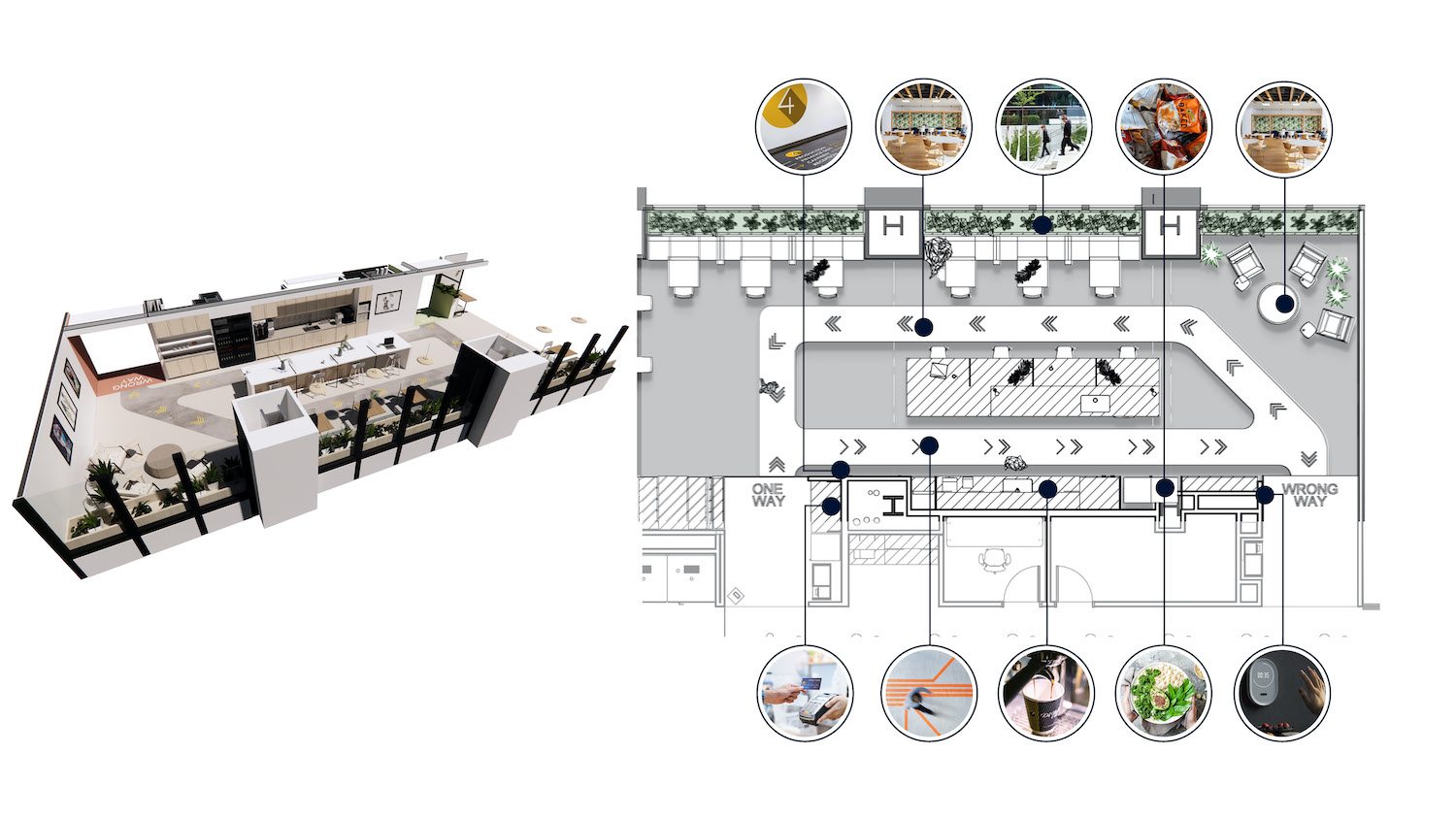
Innovation
Remaining relevant after this pandemic requires more than software and technology. It will require the exchange of bold ideas and concepts that drive transformation. If we understand ideas in various forms, e.g., intellectual, social, cultural, experiential, financial, then we must create an environment where these ideas are freely exchanged, developed, incubated, challenged and acted upon. Conventional office settings cannot deliver or maintain this level of complexity, but spaces which encourage diversity and imagination can.
Ideas will lead the way into a post-COVID-19 economy, and the new work environment should be a marketplace where the very best thinking emerges. Ideas and abstractions are less tangible in value than goods or services, but they are what drive true business transformation. The workplace must be the marketplace for this new currency. Spaces that can deliver on this promise include:
- Flexi/war rooms
- Think caves
- Kombucha/beer taps
- Café
- Customer experience center
- Side-by-side tables
- Town square
- Library
- Nap rooms
- Quiet pods
- Resource hub
- Wellness center/spa
- Concierge hub/service center
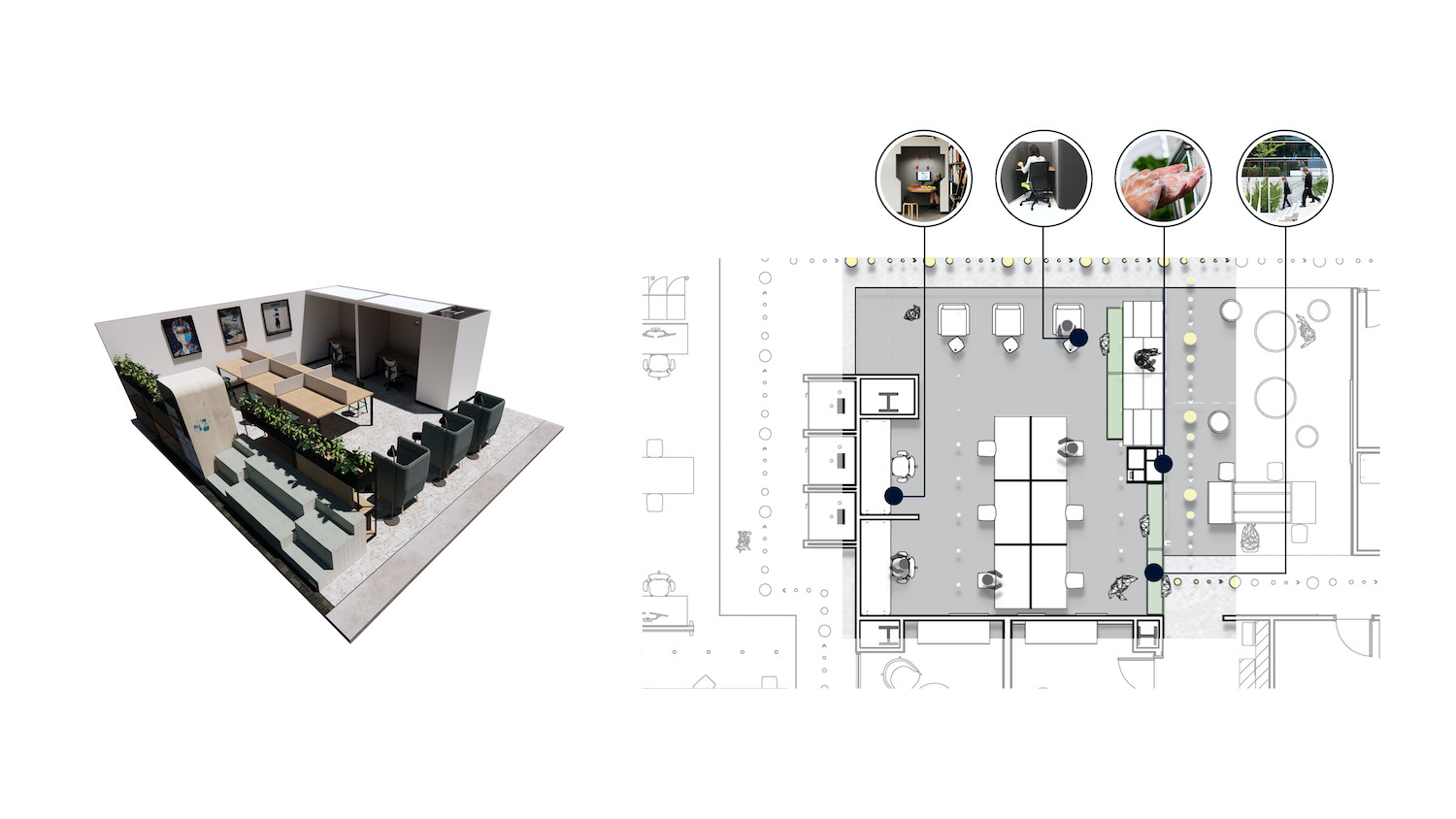
Problem-solving
A problem-solving space is where employees and partners work together to create something more meaningful and innovative than what they could have achieved alone. While a term such as “maker lab” may evoke images of hardware engineers tinkering with new technologies, a problem-solving space is adaptive and can be positioned to support any creative endeavor. Furthermore, we see this space as an opportunity for more (historically) conservative market sectors such as finance and legal to demonstrate a commitment to innovation and new thinking. This may be in the form of incubator spaces occupied by fintech startups or university students focused on a specific area of research. These areas not only maximize square footage for intense ideation, they shift brand perception and create an energy or “buzz” that will attract recruits, investors and clients.
Problem-solving spaces include the following:
- Coding/think cave
- Innovation hub
- Multimedia studio
- Immersion room
- Creative gym (gym for the mind)
- Privacy pods
- Farm tables
- Brand zone
- Huddle spaces
- Café
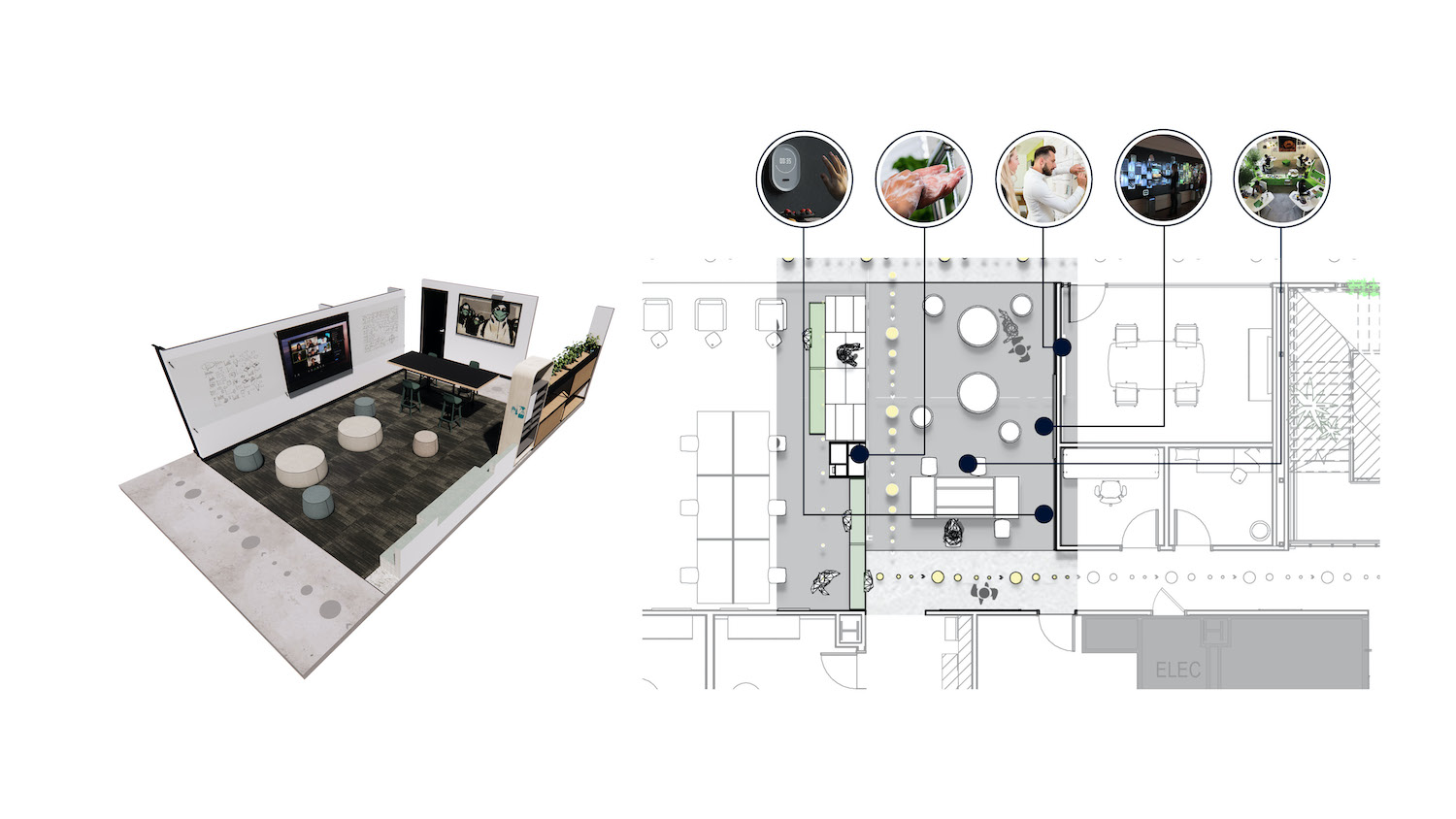
Putting it all together
If you are wondering about how all this comes together, there is no right answer. Identifying the right typology depends on market sector and organizational needs. However, below is one example of how these zones and spaces integrate to become an interdependent ecosystem.
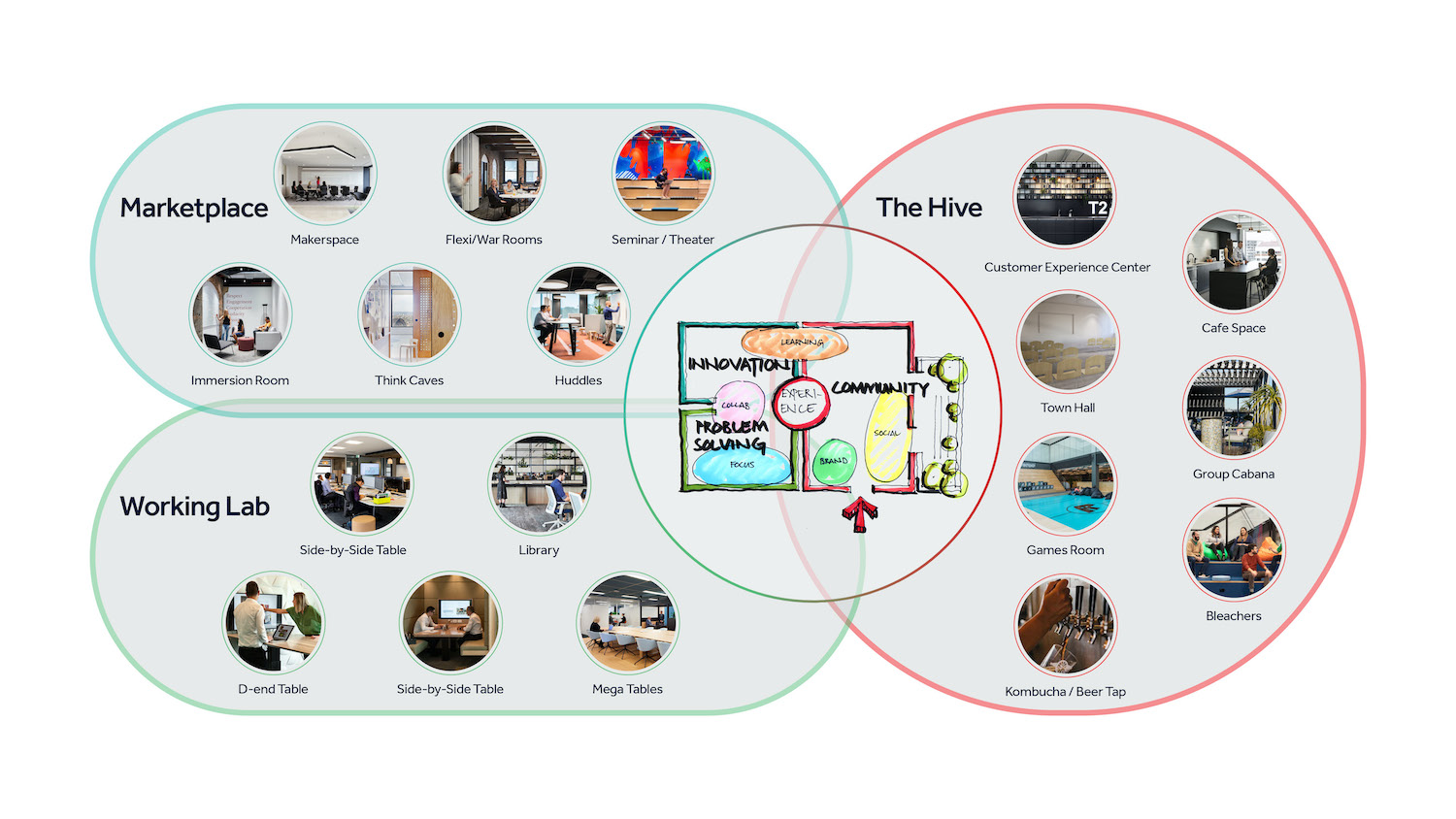
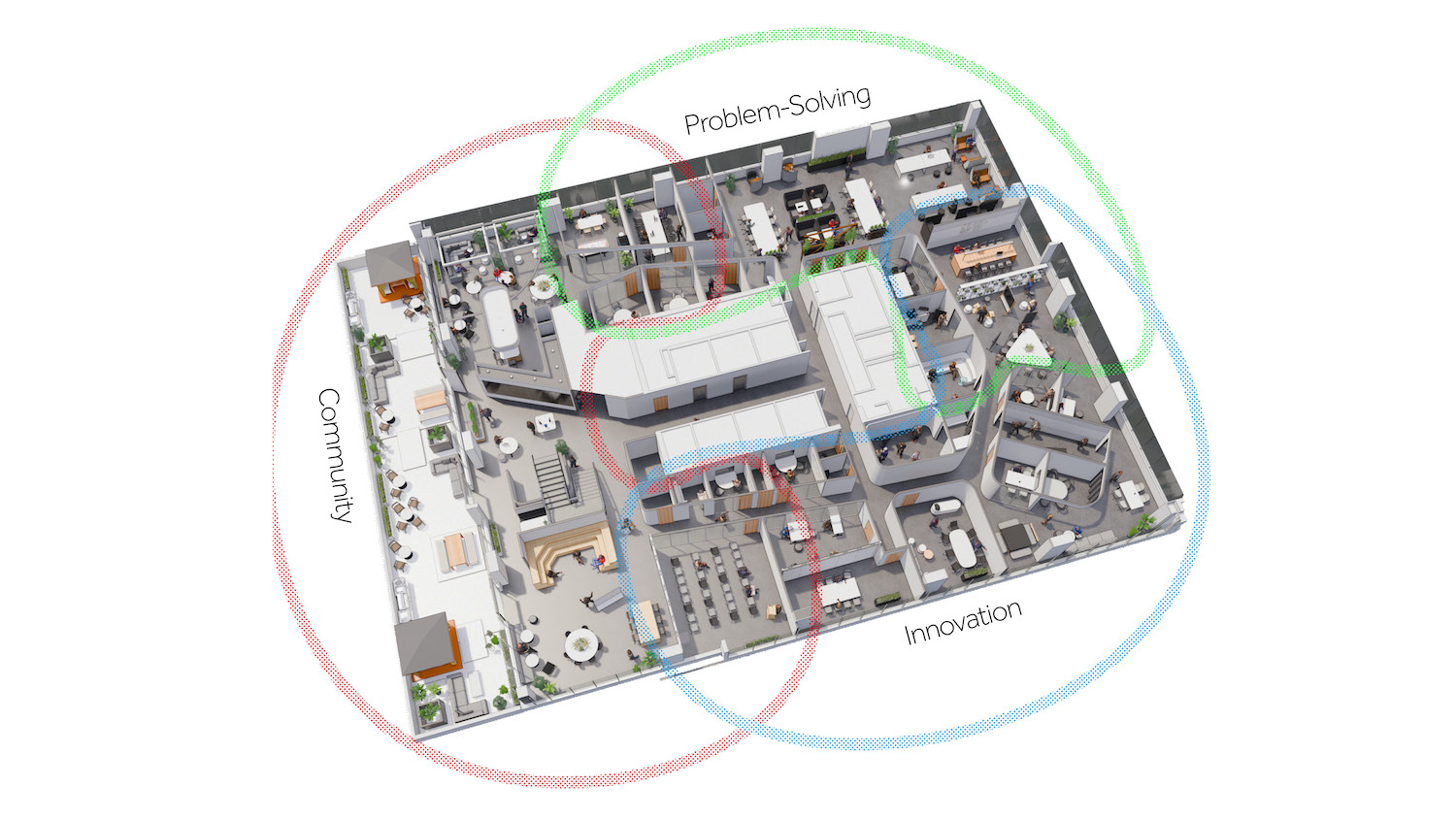
Back to the future
In 1939, Frank Lloyd Wright presented a revolutionary and innovative concept for the new working environment. His design leapfrogged conventional thinking and set a vision for what could be possible. But not without detractors and critics.
Our call to action is even more significant and prescient. Now is the time to consider bold and creative ideas that not only enable remote working, but that reimagine the workplace as driver of culture, ideas and innovation. If organizations want to evaluate cost against the unknown future, then it is time to think beyond the workstation and propel ourselves into this occasion.
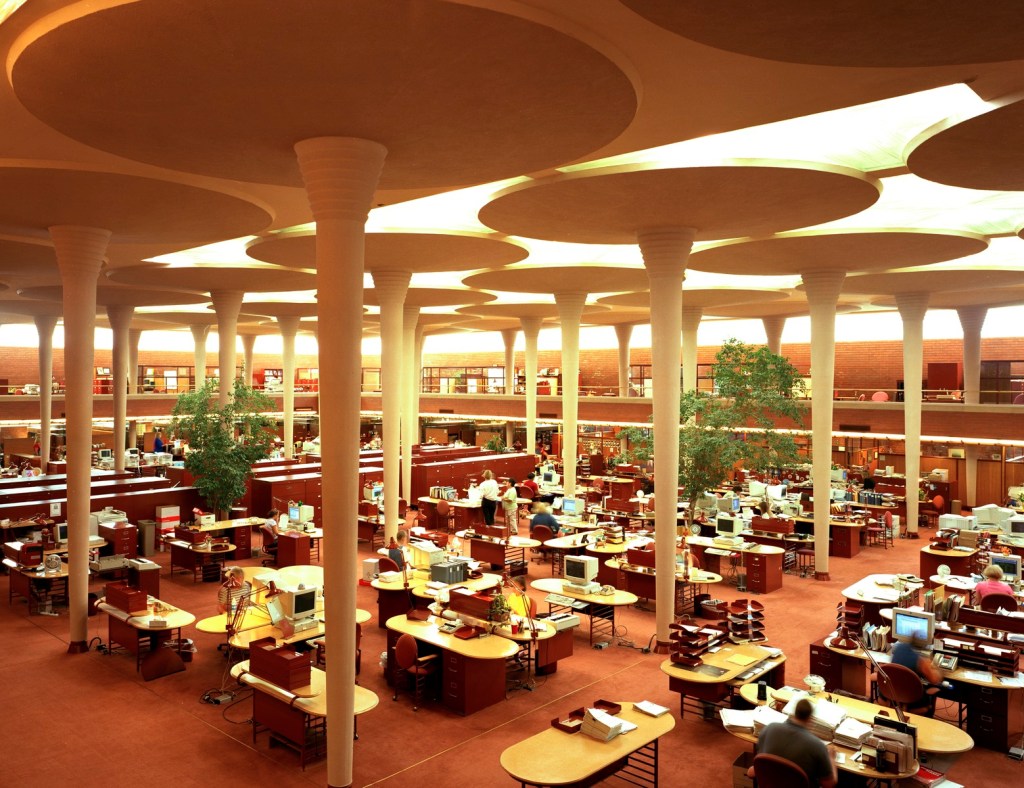






























Comment